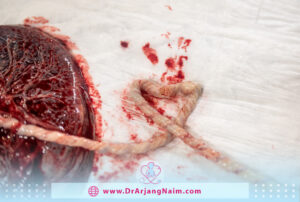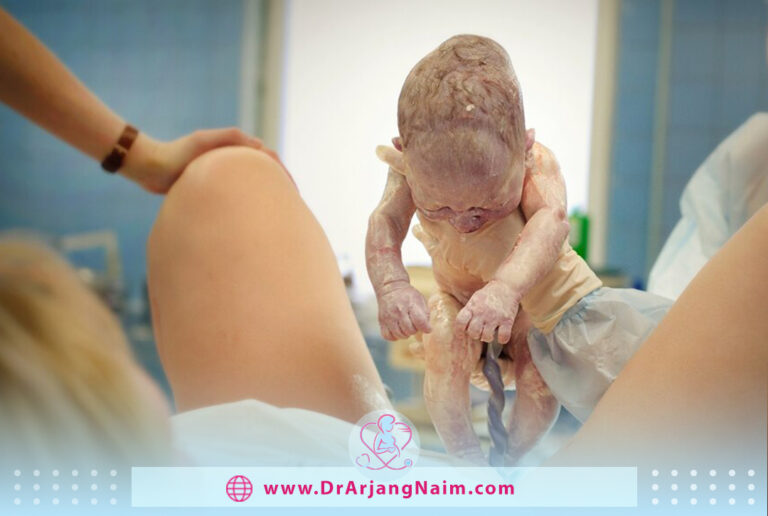The placenta (umbilical cord) is a temporary uterine organ during pregnancy. It connects to the uterus wall and delivers nutrients and oxygen to the baby through the umbilical cord. Some placental conditions can cause pregnancy complications.
What is the placenta?
The umbilical cord is a temporary organ that connects the baby to the uterus during pregnancy. It grows shortly after conception and attaches to the uterine wall. The baby is connected to the placenta by the umbilical cord. The umbilical cord acts as a lifeline for the baby in the womb. Functions of the placenta include:
- It gives the baby oxygen and nutrients.
- Removes harmful waste materials and carbon dioxide from the child.
- It produces hormones that help the child grow.
- It transfers immunity from mother to child.
- It helps protect the child.
How much does the placenta weigh?
At 10 to 12 weeks gestation, it weighs an average of approximately 2 ounces. At 18 to 20 weeks, the placenta weighs about 5 ounces. During the second trimester, it continues to grow along with the uterus. In most women, growth slows in the third trimester as the baby maximizes the uterine space. At full term or 39 weeks, it will weigh about 1.5 pounds (24 ounces).

What affects the health of the placenta?
Various factors can affect the health of the placenta during pregnancy.
High blood pressure
High blood pressure can affect the placenta.
Water breaking before delivery
During pregnancy, the baby is surrounded and covered by a fluid-filled membrane called the amniotic sac. If the sac leaks or breaks before labor begins, also called water breaking, the risk of specific problems with the placenta increases.
Twin or other multiple pregnancies
Being pregnant with more than one baby may increase the risk of certain problems.
Blood-clotting disorders
Any condition that impairs the blood’s ability to clot or increases the likelihood of it clotting increases the risk of certain placental problems.
Previous uterine surgery
Surgery on the uterus, such as cesarean delivery or surgery to remove fibroids, increases the risk of placenta-specific problems.
Previous placental problems
If placental problems have occurred in a previous pregnancy, the risk of developing l problems may be higher.
Substance use
Certain placental problems are more common in women who smoke or use cocaine during pregnancy.
Abdominal trauma
Abdominal trauma such as a fall, accident, or other trauma increases the risk of placental abruption.

Maternal age
Some placental problems are more common in older people, especially after age 40.
When does the umbilical cord form?
The umbilical cord begins to form after the implantation of the fertilized egg in the uterus about 7 to 10 days after conception. It continues to grow to support the baby during pregnancy. The umbilical cord begins as a few cells and grows to several inches.
When does the placenta take over?
The umbilical cord takes over hormone production until the end of the first trimester. By this time, the corpus luteum controls most of the hormone production. Symptoms of nausea and fatigue in the first trimester of many people disappear after the dominance of the placenta in the second trimester.
What does the placenta do?
It helps the baby survive and stay healthy during pregnancy. Blood passes through the placenta and delivers oxygen, glucose, and nutrients to the baby through the umbilical cord. The placenta can also filter harmful waste products and carbon dioxide from the baby’s blood. It allows the exchange of oxygen and nutrients between the maternal and fetal bloodstreams without mixing them. It acts as the child’s lungs, kidneys, and liver until birth.
As the mother gets closer to delivery, the placenta sends antibodies to your baby to quickly boost his immunity. This immunity is maintained in the first few months of the child’s life.
During pregnancy, the placenta produces essential hormones such as lactogen, estrogen, and progesterone. These pregnancy hormones are beneficial for both the mother and the fetus. For example, the placenta produces hormones that suppress milk production during pregnancy.
Where does the umbilical cord form?
It can form anywhere in the uterus. Wherever the fertilized egg implants in the uterine wall, it grows. Some placenta positions include:
- Posterior: The placenta grows in the back wall of the uterus.
- Anterior: The placenta grows in the front wall of the uterus near the abdomen.
- Fundal: The placenta grows on top of the uterus.
- Lateral: The placenta grows on the right or left wall of the uterus.
The umbilical cord can move up until about week 32 of pregnancy. It is common for the placenta to move up and away from the cervix as the baby gets older.
What are the most common placental problems?
During pregnancy, possible placental problems include placental abruption, placenta previa, and placenta accreta. After delivery, the remaining umbilical cord is sometimes a concern.
Placental abruption
If the umbilical cord is partially or completely separated from the inner wall of the uterus before delivery, a condition called placental abruption occurs. This can deprive the baby of oxygen and nutrients and cause heavy bleeding. A placental abruption can lead to an emergency that requires premature delivery.
Placenta previa
Placenta previa can cause heavy vaginal bleeding during pregnancy or childbirth. The management of this complication depends on the amount of bleeding, pregnancy interval, cessation of bleeding, the position of the placenta, and the health of the mother and fetus. If placenta previa persists into the late third trimester, the doctor will recommend a cesarean section.
Placenta accreta
Normally, the placenta separates from the uterine wall after delivery. With placenta accreta, part or all of it is firmly attached to the uterus. This condition occurs when blood vessels and other parts of the placenta grow too deeply into the uterine wall. This can cause severe blood loss during delivery.
In invasive cases, the placenta invades the uterine muscles or grows through the uterine wall. The doctor will probably recommend a cesarean section followed by a hysterectomy.

What kinds of substances are harmful to the placenta?
Medicines, drugs, alcohol, and nicotine can all be transferred from the bloodstream to the fetus through the placenta. Talk to your healthcare provider before taking prenatal medications (including vitamins and supplements). Drinking alcohol or smoking during pregnancy is not recommended.
How is the placenta born?
It is delivered shortly after the baby is born (usually between 5 and 30 minutes). This is called the postpartum stage or the third stage of childbirth. If the baby is born vaginally, the uterus continues to contract to expel the placenta. The healthcare provider may push on the abdomen or ask the mother to give one last push. If the baby is born by cesarean section, the doctor removes the umbilical cord through the incision used for delivery. Rarely do parts of the placenta remain in the uterus after delivery. This can cause bleeding, pain, and infection.

What happens to the placenta after birth?
In most cases, the placenta is discarded after birth. However, some people bank placental tissue through a stem cell bank. A placental tissue bank collects and stores tissue and blood after delivery. Placental tissues are rich in stem cells that can treat certain diseases and life-threatening conditions. Sometimes a doctor may ask a pathologist to examine the placenta if the mother or baby has conditions such as a fever or illness, if the baby was born prematurely, or if the baby is tiny for gestational age.
The bottom line
The umbilical cord is the lifeline between mother and baby. It is a vital organ that provides nutrients and oxygen to the baby until birth. Certain conditions during pregnancy can affect the placenta and cause it not to function as it should. After delivery, it should be removed entirely from the body. The health of the umbilical cord should be checked after delivery. Even if a small part of the placenta remains in the uterus, the mother will experience various complications and should be removed immediately.
Additional questions
- What is the main cause of high blood pressure in pregnancy?
Preeclampsia is a complication that affects some pregnant women, usually after 20 weeks. It is a placental problem that usually causes high blood pressure. If left untreated, preeclampsia can be dangerous for both mother and child.
- Can the posterior placenta change to the anterior?
It can move as the abdomen grows, meaning the placenta can start at the front but move to the top of the uterus as the pregnancy progresses. An anterior umbilical cord does not cause health problems for the mother or the baby.
- What is the most drug use during pregnancy?
Prenatal drug use is a critical public health concern associated with several adverse consequences for both mother and fetus. The most consumed substance in pregnancy is tobacco, followed by alcohol, cannabis, and other illicit substances.
- What is the most common cause of abdominal trauma in pregnancy?
Abdominal blunt trauma is the main type of traumatic injury in pregnancy; the most common causes are motor vehicle accidents, falls, and assaults.
- What are blood clotting disorders caused by pregnancy?
If you are pregnant or have recently had a baby, you are at a higher risk of developing blood clots. Blood clots in pregnant women tend to form in the deep veins of the legs or the pelvic area. This condition is known as deep vein thrombosis (DVT).
References
https://my.clevelandclinic.org/health/body/22337-placenta
https://www.nhs.uk/pregnancy/labour-and-birth/what-happens/placenta-complications/
https://www.whattoexpect.com/pregnancy/placenta




